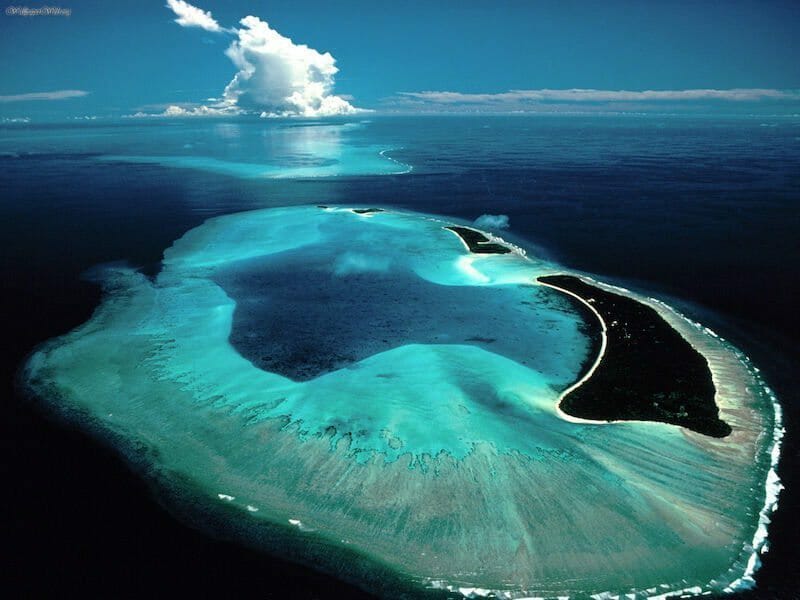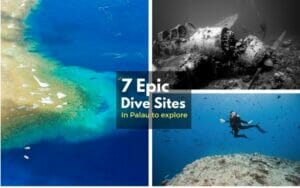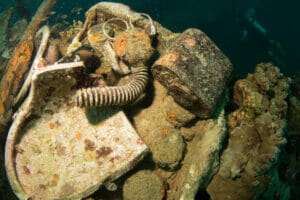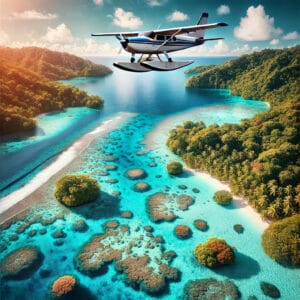Tourism in Palau is centred around scuba diving and snorkelling, which both are outstanding, but there are a lot of other Palau points of interest you should see.
In this article, we will tell you where you can find the best Palau points of interest and how to get there from Koror. There are, of course, some POI’s that can only be reached by boat!
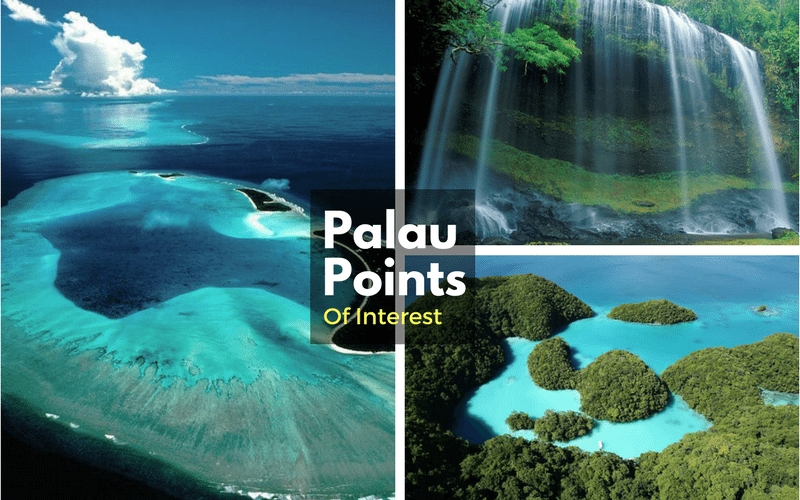
During the Second World War, Palau was in the centre of a battle arena for control of the Pacific. As such, there are many different relics and historical sites that you can visit.
If you have plans to visit Palau and want to know more about its past, then continue reading to find out more about the top things to do in Palau.
You should probably plan two days to go and see as many of the stunning sights as you can during your visit to Palau.
Top things to do in Palau
Palau points of interest visited by boat
Peleliu Island: Bloody Nose Ridge and 1,000 Man Cave
One of the attractions of Palau you should not miss on your vacation is a visit to Peleliu Island.
This seemingly peaceful island was the venue of the battle of Peleliu which became one of the bloodiest battles in the Pacific during WW2, and even today, many artifacts let the tragic history of the Island of Peleliu come to life.
- Location: Peleliu Island, Palau
- How to get there:
- 70 minutes Speedboat ride from Koror (weather permitting)
- Opening hours: every day
- Entrance fee: The permit for Peleliu is $30.
- Things to see: Historical battle site from WW2, complete with relics
- Duration of visit: half to a full day. A visit can be combined with two dives around Peleliu
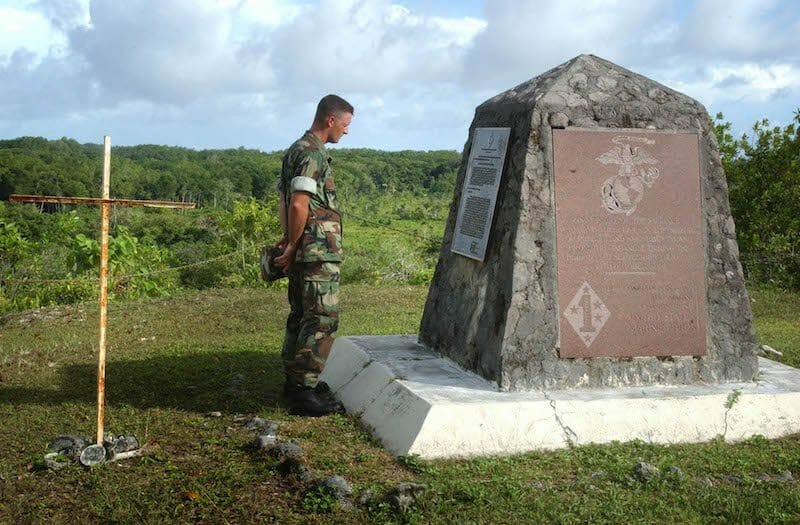
All our dive packages include 2 dives at Peleliu (weather permitting) where we will explore dive sites like Peleliu wall, Peleliu Express and Peleliu cut
After our dives and lunch on the island, we embark on a guided half-day Peleliu World War II land tour.
On this tour, we will explore the remnants of a Japanese headquarter buildings and will see the many gun emplacements, tanks, planes and weapons scattered around the island.
On the island, you will also find Bloody Nose Ridge and 1,000 Man Cave.
Bloody Nose Ridge garners its name from the fact that Marines during the war had to pass through here during the conquering of the island; a high number of casualties occurred due to the nature of the terrain, slowing their movements.
The 1,000 Man Cave is part of a system built by the Japanese to fortify themselves on the island and repel allied forces.
Milky Way Lagoon, Rock Islands
- Location of the Milky Way Lagoon?
- Within the Rock Islands
- How to get to Milky Way lagoon?
- 70 minutes Speed Boat ride from Koror
- Opening hours: every day
- Entrance fee: permits for the Rock Islands are 50$ for ten days
- Included in our dive packages.
- Things to see: Beautiful secluded Laguna with milky “white” water and white sand
- Interesting facts: The white sand is known for its beneficial and healing characteristics.
- Duration of visit: 1 to 2 hrs.
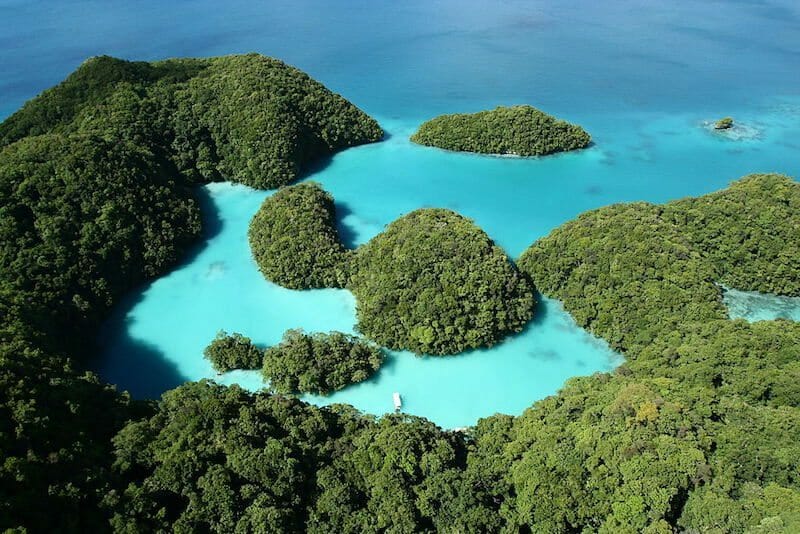
You have probably read all about the fantastic diving, snorkeling, and kayaking in and around the Rock Islands and the world-famous Jellyfish Lake, and since you here already, you should take advantage of nature’s spa, the Milky Way.
The Milky Way is a secluded lagoon within the Rock Islands. Over hundreds of thousands of years, the tides bring in water enriched with limestone and chalk particles that sunk to the bottom creating a thick layer of white rich mud.
It is sad, that when you rub yourself with the white (smelly) mud, you will look ten years younger after you rinsed it.
A trip to the Milky Way is best combined with a Rock Islands Kayak and snorkel tour.
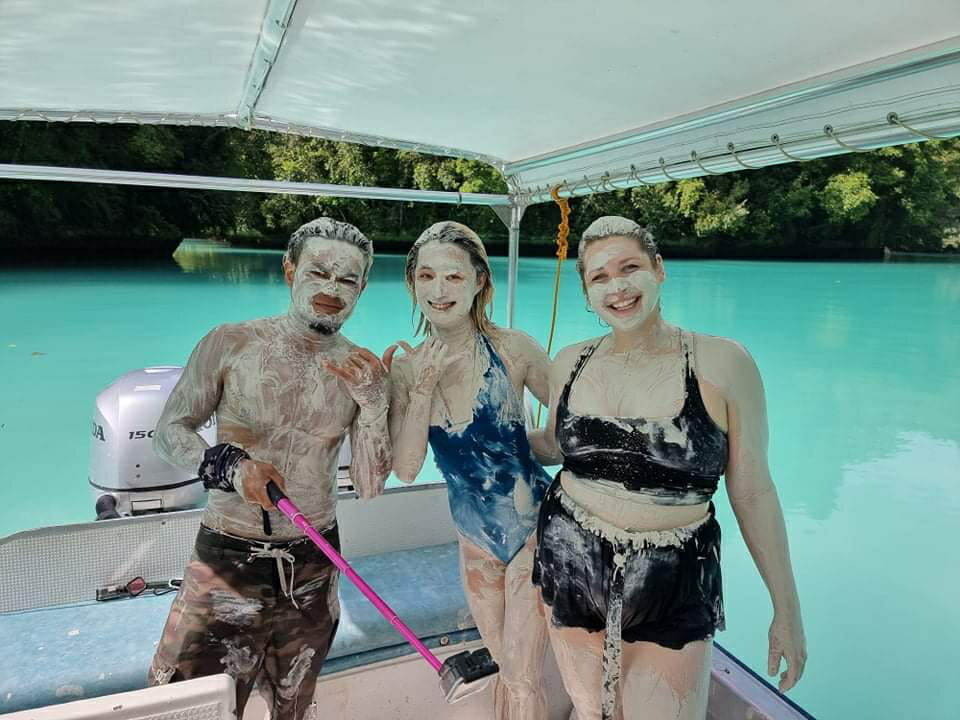
Kayangel Atoll Belau, Palau
- Location: Kayangel Atoll, Palau
- How to get to the Kayangel Atoll?: 2 hrs speedboat ride from Koror
- Opening hours: every day
- Entrance fee Depends on tour operator
- Things to see: Palau’s only atoll, beautiful sea vistas, great beaches
- Interesting facts: You can book an overnight stay at a Rangers’ house or call/e-mail Kayangel state for permission to pitch a tent and spend the night on the beach for the real island experience
- Duration of visit: Full day trip
The Kayangel Atoll is the only atoll in Palau and one the most amazing Palau points of interest.
Despite being hit by a typhoon some years ago, Kayangel still offers stunningly beautiful beaches, with white sand, seashells, and driftwood, like you only know them from your dreams. The water around the atoll is a breathtaking azure color.
The Kayangel Atoll is the perfect place to sit in the shallow water, contemplate the ocean, enjoy the natural beauty of the area and be happy.
Spend the day here with fishing, snorkeling and sunbathing! If you’re lucky, you can even spot some wild dolphins!

Points of Interest in Koror
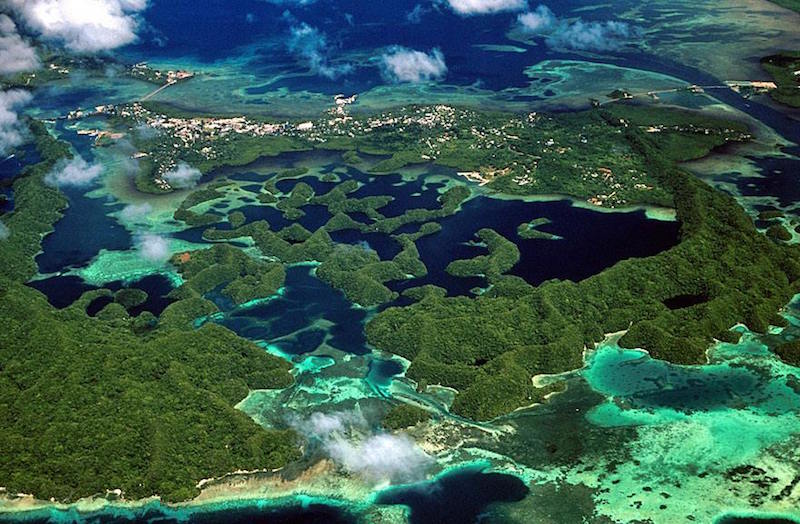
Koror is both a state and the biggest city in Palau. About 70% of the entire population of Palau live here. It is the island nation’s center of commerce and attracts the majority of tourism.
It has many interesting sights to offer, but if you are interested in the history and culture of Palau, you should not miss its’ museums.
The Belau National Museum, Koror
Location: Ngerbeched Hamlet, Koror
Opening hours: Monday – Friday 9 am – 5 pm, Saturday 10 am – 5 pm, Sunday 1 pm – 5 pm
Entrance fee: Adults 10 USD, Children 5 USD, discounted rates for residents
Things to see: Great overview of the history and culture of Palau and its colonialization, mostly photographs and text. Natural History Museu
Interesting facts: Besides the museum, there is also a botanical garden, a gift shop, and the Keam Cafe
Duration of visit: 1hr
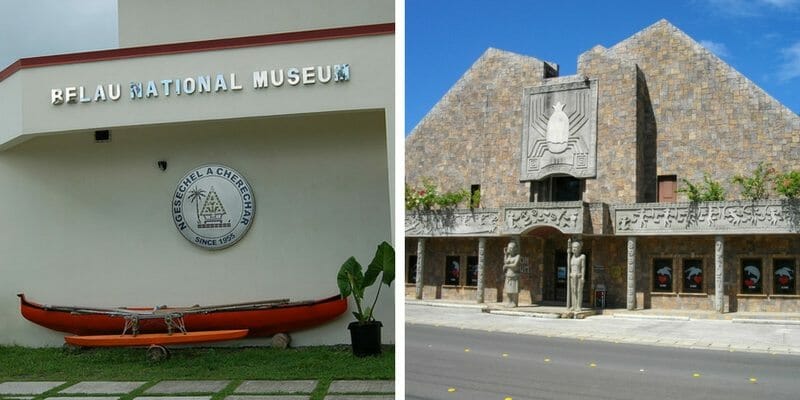
Etpison Museum, Koror
- Location: Koror, Palau
- Opening hours: Monday – Saturday 9 am – 5 pm, Sundays closed
- Entrance fee: Adults 10 USD, Children under the age of 12 and residents are free
- Things to see: Overview of the history and culture of Palau and Micronesia with many ancient maps and photographs
- Interesting fact: The Museum spearheads many environmental and conservation programs
- Duration of visit: 1 hour
This beautiful little museum offers an eclectic collection of exhibits focusing on the history and culture of Palau and Micronesia.
The museum collection includes displays on foreign influence, traditional money types, the famous 1st childbirth ceremony, canoes and fish traps, rare seashells, and master carvers’ storyboards.
The museum recently added a selfie bai mural, plus a bird mural where tourists can identify the endemic birds of Palau, with sounds, photos and information on all of Palau’s birds with the iBird App.
Palau Points of Interest on Malakal Island
Head over to Malakal Island for the perfect way to finish a day of diving or sightseeing Palau Points of Interest with a relaxed meal and a refreshing beverage!
You will find a great selection of bars, cafés, restaurants, and hotels on Malakal Island. Malakal Island is where you will find the Palau Royal Resort set in lush gardens with its private beach, but there is so much more!
Drop-Off Bar and Grill
Head to the Drop-Off Bar and Grill for a sundowner. Food is good and reasonably priced, but the seafront scenery is unbeatable! Have one of the best Pina Coladas in town and enjoy it on the deck overlooking the sea.
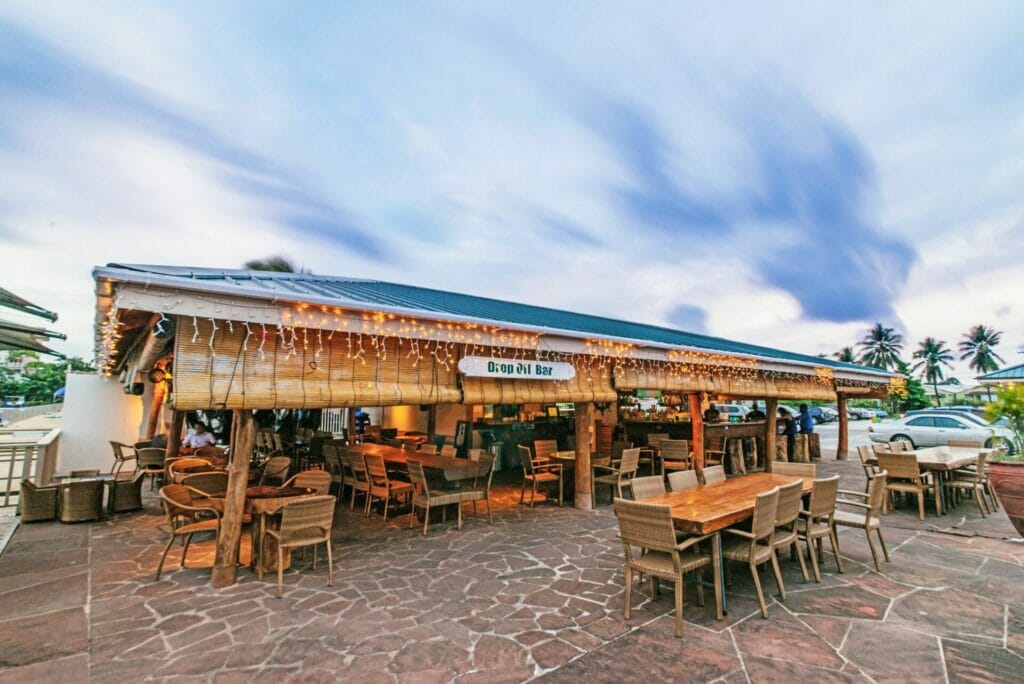
Kramer’s Restaurant
If you are looking for dinner, head over to Kramer’s Restaurant for awesome food and excellent service.
Kramer’s is a favourite hangout for expats living in Palau. A personal favourite from the menu is the Chicken BBQ Fajitas, which are finger-licking good, or, if you prefer seafood, try the fish tacos!
All seafood dishes are super fresh and tasty! Some people say that here they make the best mojitos on the island!
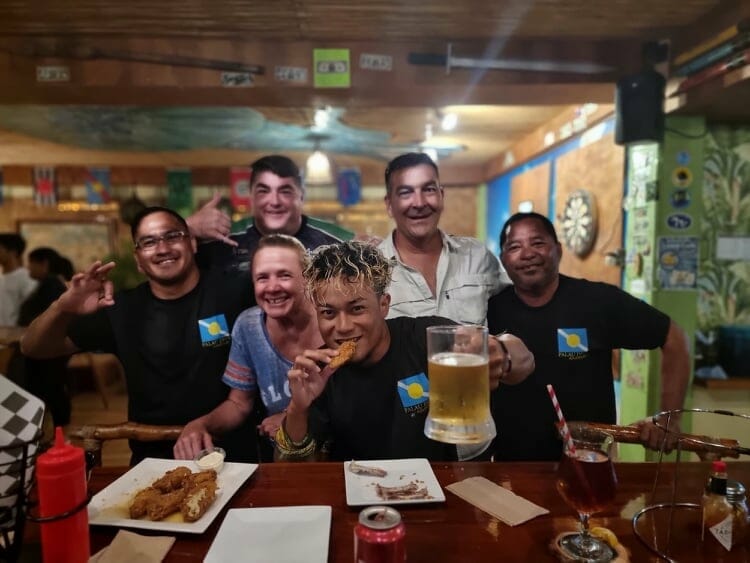
Bottom Time Bar and Restaurant
Also, the Bottom Time Bar and Restaurant deserves to be mentioned It is the ultimate sunset and evening spot for divers, yachties, and locals, offering a diverse food and beverage selection.
This is a great place to hang out and talk diving over a pint of the local draft, “Red Rooster.” There is a Happy Hour from 3 pm to 6 pm.
The bar menu includes wine, breezy island cocktails, and an international selection of canned and draft beers ranging from locally brewed Red Rooster.
Culinary choices include grilled dishes, such as pork, beef, hamburgers, chicken and fish, sandwiches, and appetizers.
Palau Points of Interest in Babeldaob
Koror is connected to Babeldaob by the Koror-Babeldaob Bridge, build in 2002, to replace the former, collapsed bridge constructed in 1978 and collapsed in 1996. In Babeldaob you will find the following point of Interest.
The Bai, Airai State
Airai State with a population of around 3000 people is the second most populous state of Palau. It stretches over an area of 44 km², and contains the country’s major airport, the Roman Tmetuchl International Airport. Its biggest town is also called Airai.
The city is best known for its traditional Palauan men’s meeting house, a so-called Bai. In former times, each village in Palau used to have its own Bai. At the beginning of the 20th century, more than 100 bais were still in existence in Palau.
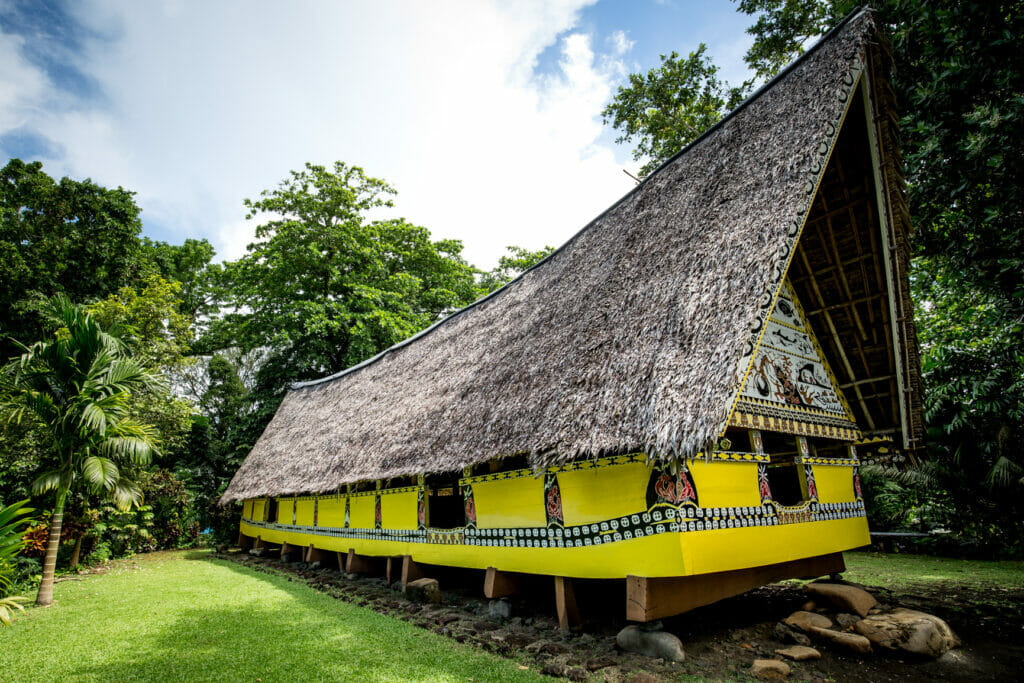
Palau’s oldest bai (men’s meeting house) is over 100 years old, 21m long and 6m wide, with a steeply pitched roof reaching a height of 12m.
It was constructed using local materials of wood and thatch on a stone platform. A number of legendary scenes and symbolic motifs are painted inside and outside.
Look for the figure of delerrok, the mythical money bird, found at all four corners of the bai; it was thought to bring good fortune to the village.
Airai Bai is in a clearing in the village of Airai. It’s not signposted; ask locals for directions. Chances are the keeper of the bai will miraculously appear and ask for the entrance fee.
Unfortunately, some of the Bais in existence today have not been treated kindly by Palau’s hard rains, but for anybody even remotely interested in Palauan history and culture they are still worth a visit as they used to be such an integral part of community life.
Palau’s Capital: Melekeok and the Ngerulmud
Despite Koror being the largest city in Palau, with around 20,000 inhabitants, it has not been the island’s capital since 2006.
What is the capital of Palau, you might ask?
An innocuous little town called Melekeok, on the Isle of Babeldaob, the country’s largest island, located 20 km northeast of Koror. The city, with its 400 inhabitants is the least populous capital of any sovereign state worldwide.
Melekeok, Palau’s capital, is the home of Palau’s capitol building, the Ngerulmud, the administrative seat of Palau. It is a most impressive building, maybe a little too grand for such a modest, but lovely town as Melekeok!
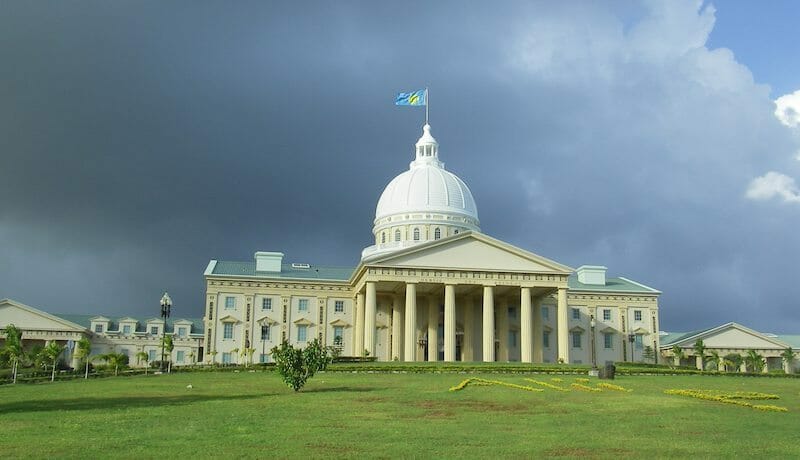
The Ngardmau Waterfall in Babeldaob
- Location: Babeldaob
- How to get The Ngardmau Waterfall: Drive up north from Airai, 40 minutes’ trek from entrance to Waterfall
- Opening hours: 9 am – 5 pm, open every day
- Entry fee: 20 USD p.p (Tickets can be purchased on the parking lot)
- Things to see: beautiful views, ruins of the Japanese colonial times and the Ngardmau Waterfall
- Duration of visit: 2 to 3 hrs
The Ngardmau Waterfall in Babeldaob is the largest waterfall in Palau. This waterfall is around 30 m high and 37 m wide.
As you follow it downstream, you can find beautiful little pools and miniature waterfalls.
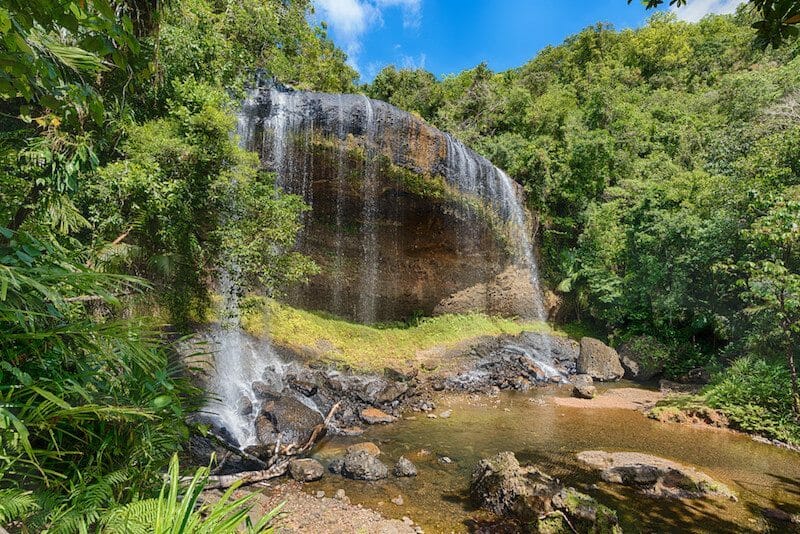
During the hike to the waterfall, you can find historical remains of Japanese colonial times along the trail, such as an old locomotive and other parts of an old railway system.
If you’re not much of a hiking person, you can take the monorail or even a zip-line down to the Ngardmau Waterfall.
According to a Palauan legend, then Ngardmau waterfall was formed by the body of a spirit, a huge eel with only one eye, that was believed to be a God.
One day, this spirit fell into a deep sleep, and unable to wake up again, his body developed into the river, with the head becoming the Ngardmau Waterfall.
Stone Monoliths of Ngarchelong
Located at the northernmost point of Babeldaob you will find a series of stone monoliths. Legend has it these were placed there by a god to support the building of a Bai to hold all of his people.
- Location: Badrulchau, Babeldaob
- Opening hours: 9 am – 5 pm
- Entrance fee: 5 USD
- Things to see: Stone monoliths, scenic view over the ocean
- Interesting facts: The big stones to build these monoliths do not originate from the island of Palau, but had to be imported from elsewhere
- Duration of visit: one hour
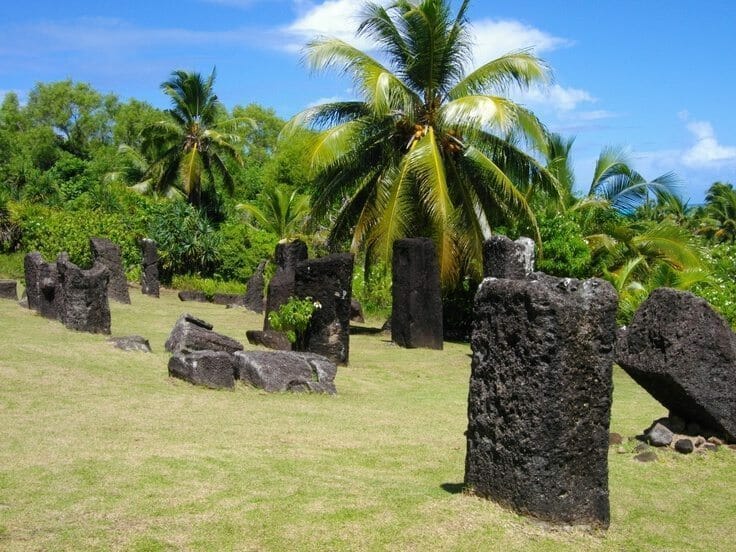
What are monoliths?
Monoliths are defined as large blocks of stone or a statue, obelisk or column cut from one block of stone. Examples include Stonehenge or the colossal statues of men on the Easter Island, the so-called Moais.
The Badrulchau Stone Monoliths are a lot smaller in size, and all-around also less impressive, but nevertheless worth a visit.
The Stone Monoliths of Ngarchelong are part of a historic site that is shrouded in mystery, and no one knows the exact origin of these structures. In local religion, they were regarded as a sacred area for prayers and rituals, but today, they are a very popular site for history lovers and tourists alike.
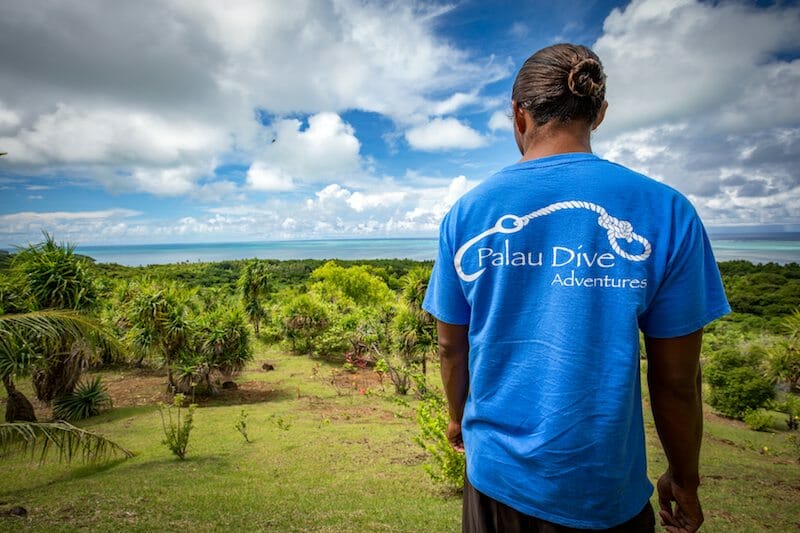
There are in total 39 stone structures protruding oddly from the ground; you’ll be inspired at how these objects have stood the test of time for thousands of years. Experts believe that these monoliths were built in 100 AD.
Impressive enough to astonish, yet small enough to be fully appreciated, many of these four-foot tall structures resemble smaller versions of the type of artifacts seen on Easter Island (though without human characteristics ascribed to them).
The largest of these stones weighs 5 tons. The views around the monoliths are strikingly beautiful with great views over the Pacific Ocean.
A tour of the Ngardmau waterfall can easily be combined with a visit of some of Palau’s stone monoliths, which are approximately a 30 min ride from the Ngardmau waterfall.
What is the best way to visit the Palau points of interest?
You can visit all the mentioned Palau points of interest by yourself at your own pace. Renting a car is quite easy and relatively cheap compared to other remote places in the world.
You can find rental cars at King’s Motel, Budget Cars and Palau Automotive just to name a few.
As you can see, Palau and its many islands have so much more to offer than just great diving and snorkelling!
Dive deeper into the fascinating history and culture of the islands and enjoy the hospitality of these amazing people and this will become the holiday of a lifetime!
If you’re dying to come to Palau (for the first time), give us a call at our U.S. office (310 321-2558), or contact us directly via our contact form and we’ll help you figure it out. Sometimes getting clear, informed answers makes all the difference!

